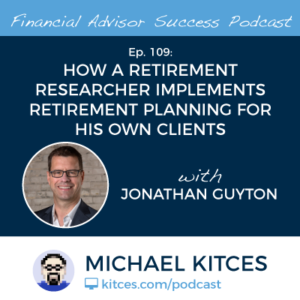One of the biggest challenges comprehensive financial planners face today is that “everyone” says they do financial planning. Yet in practice, what they actually do, whether it’s really comprehensive financial planning, or even what constitutes “financial planning” as opposed to just ad hoc financial advice, has no clear and consistent definition within the industry. And if we can’t figure out what the differences are within the industry, then it’s almost impossible for the public to understand the differences between the services offered (including any potential conflicts) by a whole bunch of people who do different stuff (frequently playing by different sets of rules) yet say they all do the same thing! Not to mention trying to help the public understand the value (both financially tangible and intangible) of the financial planning choices available and being offered to them.
To explore this issue, we’re introducing you to a new experimental (but possibly recurring if you like it!) content format we’re simply calling “Kitces & Carl” here at The Nerd’s Eye View, where Michael Kitces and financial advisor communication guru Carl Richards sit down to discuss industry topics from their own unique perspectives. And in this inaugural episode, Michael and Carl talk about the Value of Financial Advice, efforts to quantify that value, and why we may need to move past the asset-based model in order to define and communicate the real value of financial planning to our clients and the public in general.
Fortunately, both Morningstar, Vanguard, and Envestnet have done some research to try and quantify an answer to this very question. Their studies suggest that, even when we ignore any potential excess investment return, the advice that advisors provide around the dollars that they are managing can amount to an additional 1.5-3.0% over what a client would have likely gotten had they “done it themselves”
But, outside of “helping clients avoid big mistakes” by re-allocating their portfolios or talking them off the proverbial “ledge” when volatility ticks up, there’s arguably another aspect to helping clients that transcends the “quantifiable” aspect of the profession. Because most clients don’t have anywhere else they can go and feel safe talking about this topic of money, that is so important yet remains a taboo topic of discussion, and for many carries an enormous amount of baggage. And those hurdles only expand geometrically when it’s a couple that’s sitting across the desk.
In fact, perhaps the greatest problem of trying to explain the value of financial advice, especially while the industry is in the midst of such rapid change, is that we are still tying all our value conversations back to the portfolio-based model... to the extent that, even when trying to quantify the behavioral aspects of planning, industry studies still scale them to a percentage of assets. Even though an increasingly amount of the value of financial planning advice is specifically about the advice that occurs outside of the portfolio!
Alternatively, perhaps instead of trying to put a dollar value on the advice we provide as advisors at all, we might just consider framing it in terms of the real-world outcomes for clients. For instance, what if we as advisors simply said to a couple having stressful arguments about money that, “We help couples have better conversations about money, so they’re not as awkward”? And then let them figure out if it’s valuable enough to them to pay for it? Because, if an advisor can help reduce marital stress and reduce the number of marriages that end out in divorce because of money issues… then clients might consider that a whole lot more valuable that we might have ever imagined anyway!
Ultimately, then, the key point is to recognize that as financial planning continues to expand beyond just building and managing diversified asset allocated portfolios, the key task as an industry is to figure out how we can frame that value beyond the context of “investable assets”. Because if we want to better communicate our value to prospects and clients, especially beyond the portfolio, we must first be willing to fully embrace and acknowledge that value ourselves.

 Welcome back to the 108th episode of Financial Advisor Success Podcast!
Welcome back to the 108th episode of Financial Advisor Success Podcast! Welcome back to the 108th episode of Financial Advisor Success Podcast!
Welcome back to the 108th episode of Financial Advisor Success Podcast!
